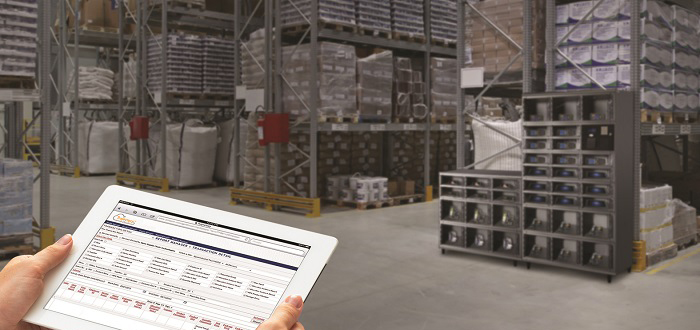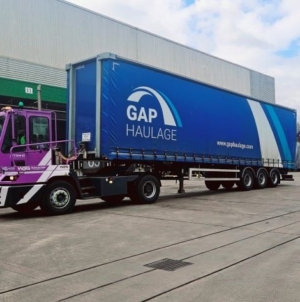-
Nutrivend selects Forterro’s Orderwise to support online expansion and streamline operations - April 11, 2025
-
ARROWXL LAUNCHES AMBITIOUS ZERO WASTE ROADMAP - April 8, 2025
-
THE BCMPA’S NEW CAMPAIGN DRIVES OUTSOURCING SUCCESS IN Q1 - April 7, 2025
-
BLACKOUT TECHNOLOGIES TARGETS TELEMATICS-INTEGRATED MOBILE DEVICE BLOCKING TO COMBAT SMARTPHONE DISTRACTION - April 1, 2025
-
OpenADR Alliance announces first OpenADR 3.0 certified products with EVoke Systems, E.ON Energy and Universal Devices - March 25, 2025
-
Growing fulfilment and contract packer appoints new Managing Director - March 25, 2025
-
When is it time to invest in a WMS? Understanding the key trigger points - March 25, 2025
-
eCapital helps Vantage Recruitment on its journey to financial success - March 24, 2025
-
Hugo Beck Celebrates 70 Years of Packaging Innovation with Open House Events - March 20, 2025
-
PROLOG FULFILMENT SUPPORTS LUNA DAILY’S COMMITMENT TO BETTER BODY CARE FOR ALL WOMEN - March 19, 2025
The importance of efficient warehousing to meet omnichannel expectations.
With internet retailing rapidly expanding and placing increasing pressure on retailers, warehousing and distribution centres need to optimise the efficiency of their processes to respond quickly and flexibly to peaks and troughs in demand. Darren Wildman, Vice-President of Asset Management at Apex Supply Chain Technologies, explains the role of asset management in creating a better-connected supply chain for a truly seamless shopping experience.
Omnichannel retail is now a reality for consumers, who make purchases online, in-store and via their mobile devices. This increased number of orders means retailers need more staff and more devices to cope with demand. Typical devices used in a warehouse have included scanners, walkie-talkies, and tablets. However, an increasing number of new mobile devices are now used for picking and packing, such as voice headsets and Google glasses – the cost of which can quickly add up.
These critical devices must be managed correctly to protect retailers’ investments and to ensure staff are operating most effectively by always having the equipment they need to do their job, available and charged.
Ineffective management of these kinds of devices can cost businesses a significant amount in terms of asset repair and replacement as well as lost productivity, not to mention the issues created by these delays. Furthermore, many companies keep extra devices in reserve in case of damage or loss and employ people specifically to manage devices, adding to operational costs when these employees can often be better deployed elsewhere.
That’s not all. Although most companies own their critical devices, many can find themselves in a position where they need to rent extra devices to cope with increased demand, or even bring in additional agency workers. This can have a knock-on effect on efficiency and finances with the cost of renting devices adding up and significant penalties being incurred if these items are lost or damaged. This can be further exacerbated by the fact that these agency workers may not be fully trained on the processes in place to manage these devices and need time to be brought up to speed.
As the modern consumer’s shopping habits change, so too should the processes used by warehousing and distribution centres to meet demand. Often referred to as Warehouse 4.0, the logistics sector is moving towards a more automated approach and a key element of this is asset management.
By implementing automated lockers to manage critical assets, businesses can expect to see a noticeable change in employee behaviour, once they realise their actions are being monitored. The lockers track when assets are checked out and back in, as well as who is using them via a cloud-based platform. This results in reduced asset downtime as well as asset repairs and replacement. In addition, the incidence of lost and misplaced assets is reduced, which minimises the ‘walk and wait’ time of employees searching for these assets, boosting the efficiency of operations and employee morale.
Charging and calibration can also be integrated into the lockers to ensure the assets are always ready to use when needed, significantly increasing productivity and in turn helping to deliver on omnichannel retailers’ promise of a seamless and consistent shopping experience.
Automated lockers are easily redeployed and can be relocated as needed, particularly to cater for peaks and troughs in demand due to seasonality. With the busy Christmas season looming, now is the time for retailers to ensure their operations are as efficient as possible. This period leading into the January sales can make or break businesses and business managers. But with a better-connected supply chain in place, warehouses and distribution centres can mitigate the usual added costs of extra devices and employees by concentrating on gaining greater access and control of the devices they already have available.
For more information on Apex Supply Chain Technologies, please visit www.apexsupplychain.com/gb/

































